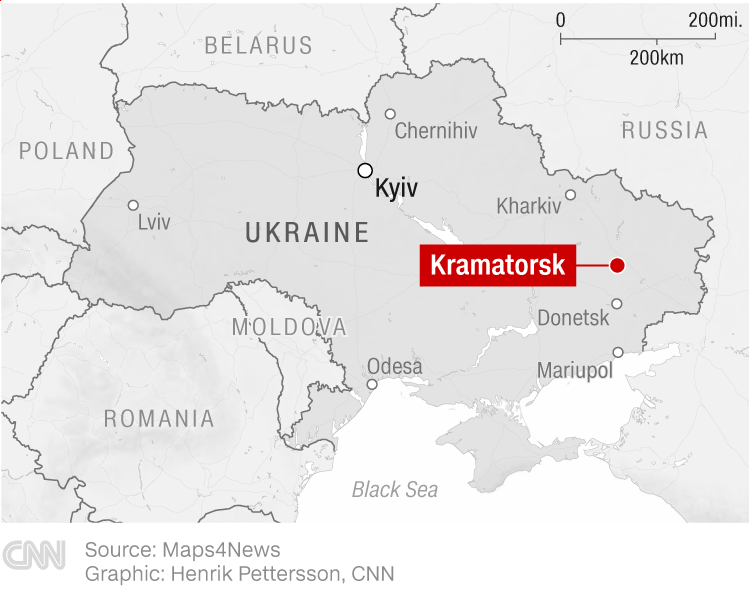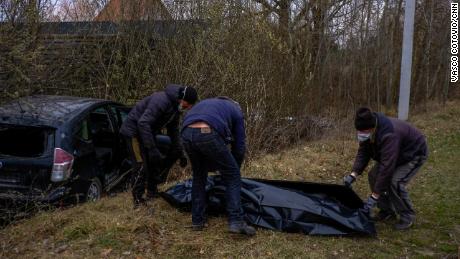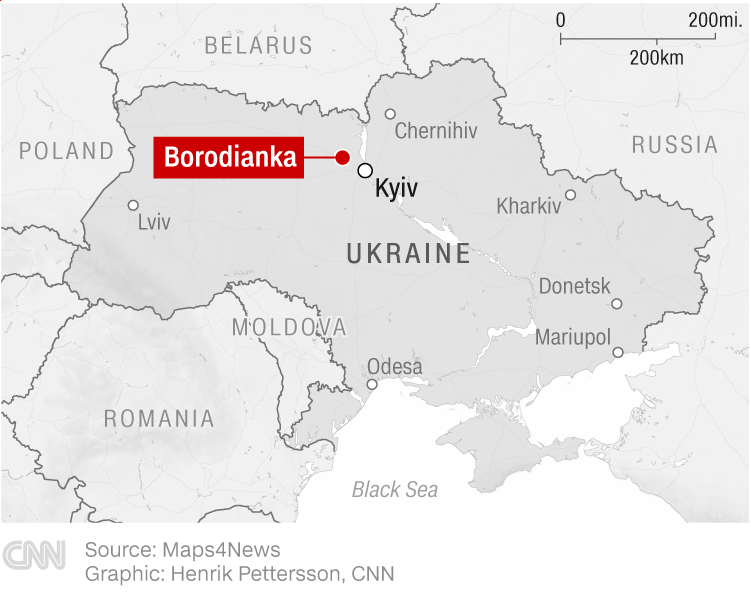This story contains graphic imagery.
As Ukrainians reclaim areas previously occupied by invading Russian troops, evidence of the horrors of recent weeks is emerging from the rubble of shattered villages and towns. New prey are discovered every day. And those lucky enough to survive this ordeal tell painful tales of kidnapping, rape and torture.
Ukraine’s Prosecutor General, Irina Venediktova, said Monday that her office is investigating 5,800 cases of alleged Russian war crimes, with proceedings starting “more and more” every day.
Russia denies allegations of war crimes and claims its military does not target civilians. But CNN reporters on the ground in Ukraine have seen direct evidence of atrocities in many places across the country.
Here’s what we saw.
Clarissa Ward. from starry bikivo
Novyi and Staryi Bykiv are two small spots on the map, separated by a small stream. Together they make up a sleepy community of about 2,000 people that you would expect some Ukrainians – let alone the Russian military – to become familiar with.
Katerina Andrusha told me that’s why her daughter Victoria decided to leave her apartment in the Kyiv suburb of Brovary and come back here at the start of the war; He was confident that he would be safe at home.
But on February 27, residents say Russian forces broke into neighboring villages, turned the local school into their base, ransacked and looted homes and terrorized the people here for five weeks.
On March 25, Katerina said that Russian soldiers came to her house and took Victoria, claiming that she had information about their army on her phone.
Three days later, Katerina herself was taken prisoner. He said that he was kept in a cellar for three days. Blindfolded and horrified, he tried to find out what had happened to his daughter.
“They told me she was in a warm house and she was working with them and would be home soon,” Katerina said.
He said that he had not seen Victoria since then. As she spoke to us, Katerina’s gaze went skyward in disbelief. She showed us pictures of her daughter, a beautiful schoolteacher.
“We hope she comes in contact with someone somewhere,” she said.
Not far away, we met another mother. Olga Yavon’s grief was raw and all-consuming. She knew why we were there and as soon as she came out to greet us, she burst into tears.
Her boys, Igor, 32, and Oleg, 33, are among six village youths whom officials say were killed by Russian soldiers on February 27.
He told us that he was surrounded by Russian forces after a nearby bridge was blown up.
He said the Russians kept their bodies for nine days with instructions to bury them quickly before dumping them on the outskirts of the village.
“They were very nice boys,” said Olga. “How do I want to see them again?”
From Fred Pleitzen in Bukaho
I’ve seen a lot of terrible things in my career, but some of the most painful things we faced on the outskirts of Kyiv after the Ukrainian army thrashed Russian soldiers.
It’s hard to watch these heartwarming moments – they even make you cry.
You could still see the horror on their faces. It seemed that the dead wanted the truth of their violent death to come out.
No matter how many bodies you see, you never forget a single body.
Kramatorsk. from Ben Weidman
In one step, we found a large pool of blood in the impact point of a shrapnel, which contained several false teeth. Somebody, perhaps an elderly person, must have hit and killed there.
City officials believe that if and when the much-anticipated offensive in the east picks up pace, Kramatorsk could be besieged, besieged and crushed by Russian forces.
The mayor was urging residents to leave, and about 8,000 people boarded westbound trains the day before Friday’s strike. The evacuation effort was publicly announced, with people from surrounding towns and villages urging them to gather at the railway station in Kramatorsk, the major regional centre. There was nothing secret in it.
Part of the missile crashed in a small park in front of the station. Somewhere, somewhere on it is written in Russian “for children”.
There is a very old tradition of tagging missiles, bombs and shells and writing slogans, but it is not certain what was the intention.
From Vasco Cotovio in Borodionkas
We were escorted to the site by the owner of the house, who had fled the city in the first few days of the war. She returned as the invading troops withdrew, only to find her home was ransacked by Russian troops.
Behind his garden shed, he showed us a man with a bag over his head, his hands tied behind his back and his trousers pulled down, leaving his underwear and heavy bruises. He had a bullet wound in the head and a bullet box was still lying next to his body.
He appears to have been tortured and killed by Russian soldiers, although we don’t know for sure what happened to him.
By this time, we had seen the now infamous mass grave in Buka, but the image of that man has stuck with me – I seem to be a more related person than the collective. It is easy to separate a group from the humanity from which they were robbed.
I keep thinking about that man and who he could be.
Was he suffering? Did he have a family? What were his ambitions? What took him to that backyard? Did they fight back, did they oppose Russian occupation? What if it was me – or my brother, who was living in Kyiv when the invasion began?
This man is too tyrannical.
And then you realize that there are countless others still waiting to be found under some rubble, in a shallow grave or in someone else’s backyard.





